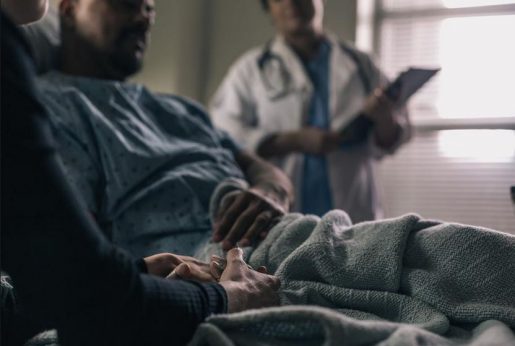Finding meaning in ‘death with dignity’
In the past two months, two of my patients have died. In the aftermath, I alternated between grief and the possibility that my grief was unearned, even presumptuous – I was not family, I was not a friend. I was simply a medical student who saw them every morning and afternoon, for a brief time.
As I tuned into the virtual American Society of Bioethics and Humanities conference last week, I was reminded of my two patients when one of the presenters in the “Dual Roles: Hospitalists as Ethics Consultants” panel cited an essay: How Doctors Die, by Ken Murray. In it, Murray mentions that given a fatal prognosis, a physician will choose pain management and comfort care, unlike their patients, who often ask their doctors to “do everything they can.”
Murray states, “futile care buys misery we would not inflict on a terrorist.” And while medical miracles do exist, we are not in the business of discussing them – least of all with hope-starved patients and their families who may take our equivocation as an opportunity to wait patiently for an outcome that will never come to pass.
Medical students are in limbo – far from being experienced clinicians, far from being uninformed. We are paradoxically closer to each of those poles at different moments in our education, yet that progress is nonlinear. I feel closer to the physician side when I talk to my mother about her diabetes (“yes, mom, I have heard of metformin and yes, please take it”), but closer to the patient side when I think about getting a pap smear at my next physical (“how do I get out of this?”).
How does someone with this perspective view “death with dignity,” as Murray puts it?

My patients. One who died after her and her family’s refusal of intubation in the face of acute respiratory distress. And one – the one I knew better, the one whose hands I held, the one for whom I swallowed my tears – died after having done everything humanly possible to save her, including surgical intervention that ultimately didn’t hold. Murray would say that the latter was a shame: to prolong her life while in obvious pain, only for the inevitable result.
The patient who died without intubation. The patient who died post-op, because the surgical repair was not successful, as we predicted. Which made me feel more at ease? Which was levelheaded and logical medicine?
For me, allowing for the blank space around probabilities to have a seat at the table is the manifestation of professional humility. You really don’t know. You can guess. You can say this is the most likely reality. This is what I believe the future will hold. But you cannot say this is the truth. And in the liminal space of medical student-hood, which often leaves me feeling incredibly small and foolish, yet still inspired, I disagree with the idea that dying with dignity always means dying without intervention.
I choose to believe that both of my patients died with dignity. While I understand the choice not to intubate, I also understand the choice to leave it all on the table. I don’t imagine I will continue to always see medicine this way. In fact, I am sure in 30 years I will read this piece and scoff at myself.
I hope when I have the conversation about code status, hundreds, if not thousands of times, I remember this moment. I hope I can give an unbiased and unflinching expectation of the conclusion, no matter how dire, as the doctors who teach me do. But when patients and their families push back, I hope I can hold my judgment and hold my tongue – and accept that there is space for the unknown.
-By Navya Kumar, M.D. candidate, Baylor College of Medicine Class of 2023 and recipient of the Laurence McCullough Travel Award



